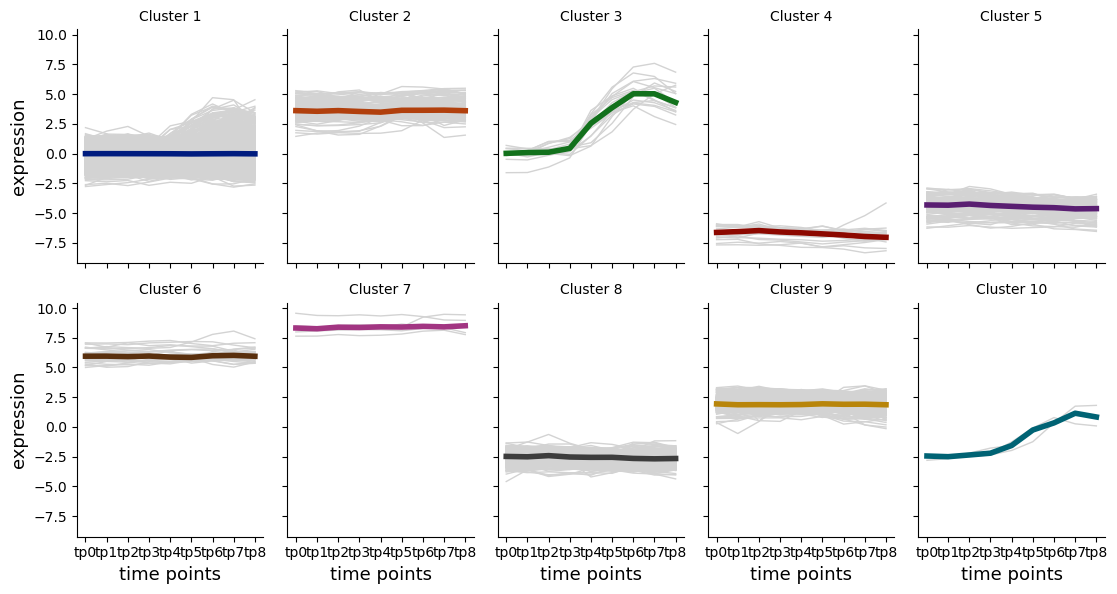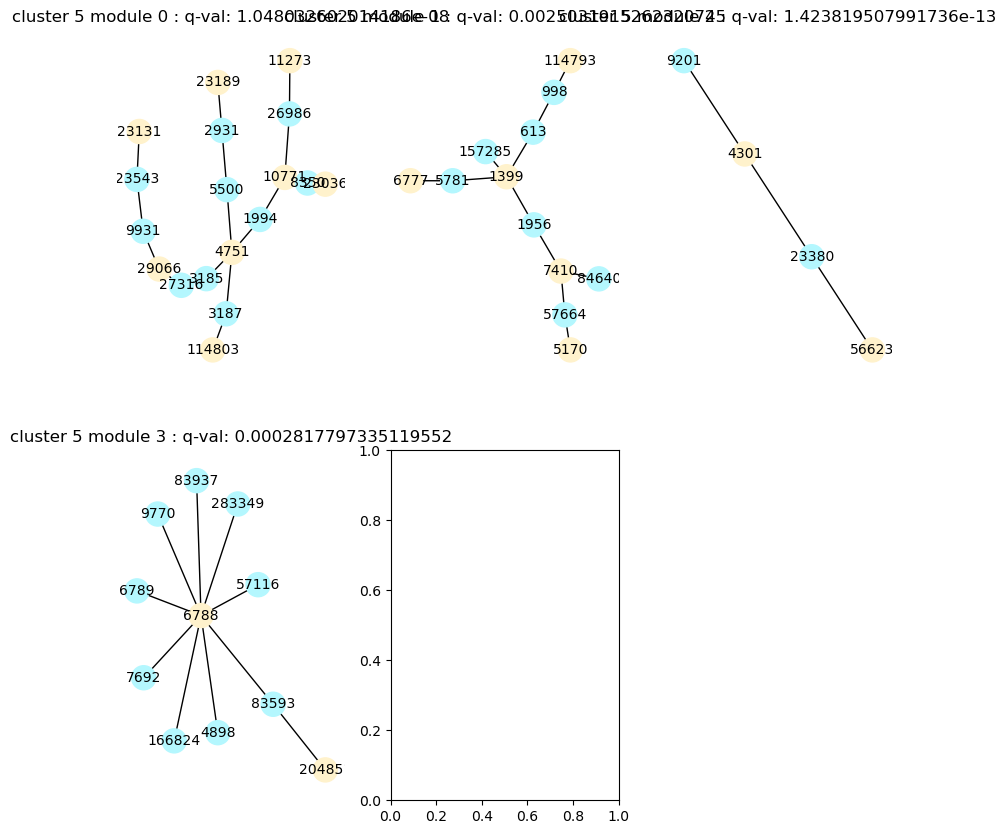[2]:
import sys
import pandas as pd
import numpy as np
import matplotlib
import matplotlib.pyplot as plt
import subprocess
import spycone as spy
Gene-level workflow
Prepare the dataset
We use a time series dataset of influenza infection with 9 time points.
[ ]:
#sample data
subprocess.call("wget https://zenodo.org/record/7228475/files/normticonerhino_wide.csv?download=1 -O normticonerhino_wide.csv", shell=True)
influ = pd.read_csv("normticonerhino_wide.csv", dtype={'entrezid': str})
gene_list = influ['entrezid']
symbs = influ['symbol']
flu_ts = influ.iloc[:,3:] ##filter out the entrez id and gene id column
DataSet which stores the count matrix, list of gene ID, number of time points, and number of replicates.ts : time series data values with columns as each sample e.g. the order of the columns should be sample1_rep1, sample1_rep2, sample2_rep1, sample2_rep2 and so on….gene_id : the pandas series or list of gene id (can be entrez gene id or ensembl gene id)species : specify the species IDreps1 : Number of replicatestimepts : Number of time pointsdiscreization_steps : Steps to discretize the data values[4]:
flu_dset = spy.dataset(ts=flu_ts,
gene_id = gene_list,
symbs=gene_list,
species=9606,
keytype="entrezgeneid",
reps1 = 5,
timepts = 9)
Import biological network of your choice with BioNetwork, Spycone provides Biogrid, IID network in entrez ID as node name. Please specify the keytype if you are using a different ID.
[5]:
bionet = spy.BioNetwork("human", data=(('weight',float),))
Preprocessing
Filtering out genes that has expression across all time points lower than 1. By giving the biological network, it removes genes from the dataset that are not in the network.
[6]:
spy.preprocess(flu_dset)
Input data dimension: (5, 19463, 9)
Removed 0 with 0 values.
Filtered data: (5, 19463, 9)
Clustering
clustering create clustering object that provides varies algorithms and result storage.
[7]:
asclu = spy.clustering(flu_dset, algorithm='hierarchical', metrics="correlation", input_type="expression", n_clusters=10, composite=False)
c = asclu.find_clusters()
clustering took 31.098841428756714s.
visualizing clustering
[8]:
%matplotlib inline
spy.vis_all_clusters(asclu, col_wrap=5)

Gene set enrichment analysis
Perform gene set enrichment analysis using clusters_gsea. Change the gene_sets parameter into the choice of your knowledge base or gene set database, e.g. Reactome, KEGG, etc. Use spy.list_genesets to view the available knowledge base.
[9]:
sys.path.insert(0, "../../../")
from spycone_pkg.spycone.go_terms import clusters_gsea
asclu_go, _ = clusters_gsea(flu_dset, "hsapiens", method="gsea")
[10]:
from spycone_pkg.spycone.visualize import gsea_plot
gsea_plot(asclu_go, cluster=5, nterms=15)
Run DOMINO
[11]:
mods = spy.run_domino(asclu, network_file=bionet, output_file_path="newslices.txt")
To visualize the modules, use vis_modules.
[12]:
%matplotlib inline
spy.vis_modules(mods, flu_dset, cluster=5, size=0)

It is also possible to visualize modules with javascript, use vis_better_modules and input a desired directory, the function will generate networks with dot format (Graphviz) (https://github.com/pydot/pydot).
vis_better_modules(flu_dset, mods, cluster=5, dir=’/path/to/file’)